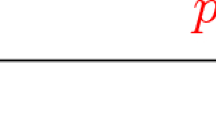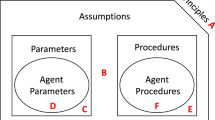Abstract
Operational algorithms for solving the inverse problem for the graph model for conflict resolution are presented for the case of two decision makers (DMs) under a variety of solution concepts, including Nash stability (Nash), general metarationality (GMR), symmetric metarationality (SMR), and sequential stability (SEQ). The algorithms based on integer programming enable a DM, an analyst, or a mediator to obtain all of the preferences required to make a specified state to be an equilibrium or resolution. For the cases of Nash, GMR, and SMR, the respective inverse algorithm for the focal DM is formulated as a 0–1 integer linear programming problem even when both DMs’ preferences are unknown. For the situation of SEQ, when both DMs’ preferences are unknown, the focal DM’s algorithm is a 0–1 integer nonlinear programming problem while, under the condition that the opponent’s preferences are known, the focal DM’s 0–1 integer programming problem is linear. The usefulness of the algorithms developed is demonstrated by applying them to an illustrative dispute.


Similar content being viewed by others
References
Balas E, Jeroslow R (1972) Canonical cuts on the unit hypercube. SIAM J Appl Math 23(1):61–69
Fang L, Hipel KW, Kilgour DM (1989) Conflict models in graph form: solution concepts and their interrelationships. Eur J Oper Res 41(1):86–100
Fang L, Hipel KW, Kilgour DM (1993) Interactive decision making: the graph model for conflict resolution. Wiley, New York
Fang L, Hipel KW, Kilgour DM, Peng X (2003) A decision support system for interactive decision making-part i: model formulation. IEEE Trans Syst Man Cybernet C Appl Rev 33(1):42–55
Fraser NM, Hipel KW (1979) Solving complex conflicts. IEEE Trans Syst Man Cybernet 9(12):805–816
Fraser NM, Hipel KW (1984) Conflict analysis: models and resolutions. North-Holland, New York
Garcia A, Hipel KW (2017) Inverse engineering preferences in simple games. Appl Math Comput 311:184–194
Garcia A, Obeidi A, Hipel KW (2021) Inverse engineering preferences in the graph model for conflict resolution. IEEE Trans Syst Man Cybernet Syst 51(3):1716–1724
Hipel KW, Sakamoto M, Hagihara Y (2016) Third party intervention in conflict resolution: dispute between Bangladesh and India over control of the Ganges River. In: Hagihara K, Asahi C (eds) Coping with regional vulnerability. Springer, Tokyo, pp 329–355
Hipel KW, Fang L, Kilgour DM (2020) The graph model for conflict resolution: reflections on three decades of development. Group Decis Negot 29:11–60
Howard N (1971) Paradoxes of rationality: theory of metagames and political behavior. MIT Press, Cambridge
Kilgour DM, Hipel KW, Fang L (1987) The graph model for conflicts. Automatica 23(1):41–55
Kinsara RA, Kilgour DM, Hipel KW (2015a) Inverse approach to the graph model for conflict resolution. IEEE Trans Syst Man Cybernet Syst 45(5):734–742
Kinsara RA, Petersons O, Hipel KW, Kilgour DM (2015b) Advanced decision support for the graph model for conflict resolution. J Decis Syst 24(2):117–145
Nash JF (1950) Equilibrium points in n-person games. Proc Natl Acad Sci USA 36(1):48–49
Nash JF (1951) Non-cooperative games. Ann Math 54(2):286–295
Rapoport A, Guyer MJ, Gordon DG (1976) The 2 × 2 game. The University of Michigan Press, Ann Arbor
Rêgo LC, Silva HV, Rodrigues CD (2021) Optimizing the cost of preference manipulation in the graph model for conflict resolution. Appl Math Comput 392(125729):1–12. https://doi.org/10.1016/j.amc.2020.125729
Sakakibara H, Okada N, Nakase D (2002) The application of robustness analysis to the conflict with incomplete information. IEEE Trans Syst Man Cybernet C Appl Rev 32(1):14–23
Von Neumann J, Morgenstern O (1953) Theory of games and economic behavior, 3rd edn. Princeton University Press, Princeton
Wang J, Hipel KW, Fang L, Dang Y (2018) Matrix representations of the inverse problem in the graph model for conflict resolution. Eur J Oper Res 270(1):282–293
Wu Z, Xu H, Ginger YK (2019) The strategy of third-party mediation based on the option prioritization in the graph model. J Syst Sci Syst Eng 28(4):399–414
Xu H, Hipel KW, Kilgour DM (2009) Matrix representation of solution concepts in multiple-decision-maker graph models. IEEE Trans Syst Man Cybernet A Syst Hum 39(1):96–108
Xu H, Hipel KW, Kilgour DM, Fang L (2018) Conflict resolution using the graph model: strategic interactions in competition and cooperation. Springer, Cham
Zhao J, Xu H, Hipel KW, Yang B (2019) Theory and implementation of sensitivity analyses based on their algebraic representation in the graph model. J Syst Sci Syst Eng 28:580–601
Acknowledgements
The authors would like to thank the anonymous reviewers and the Associate Editor for their helpful comments which improved the quality of the paper. This work was supported by the National Natural Science Foundation of China (NSFC) (Grant Nos. 71971115, 71471087, and 61673209) and by the Natural Sciences and Engineering Research Council (NSERC) of Canada (Discovery Grant Nos. RGPIN-2017-04379 and RGPIN-2018-04345).
Author information
Authors and Affiliations
Corresponding author
Additional information
Publisher's Note
Springer Nature remains neutral with regard to jurisdictional claims in published maps and institutional affiliations.
Supplementary Information
Below is the link to the electronic supplementary material.
Rights and permissions
About this article
Cite this article
Han, Y., Xu, H., Fang, L. et al. An Integer Programming Approach to Solving the Inverse Graph Model for Conflict Resolution with Two Decision Makers. Group Decis Negot 31, 23–48 (2022). https://doi.org/10.1007/s10726-021-09755-w
Accepted:
Published:
Issue Date:
DOI: https://doi.org/10.1007/s10726-021-09755-w




